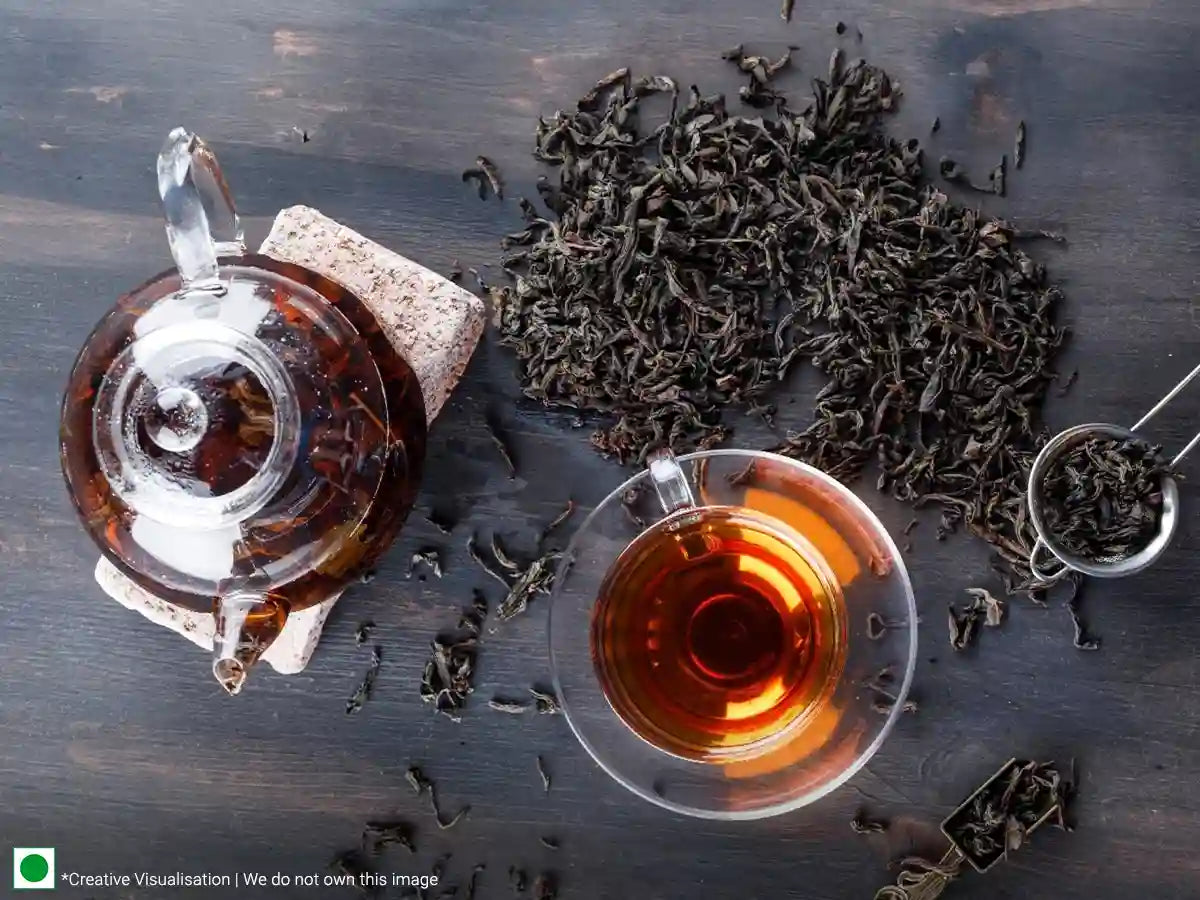
A beverage that is easy to make! A beverage that is refreshing and yet has less caffeine than its cousin coffee.
Make way for this friendly neighbourhood beverage, black tea!
Harvested from the Camellia sinensis plant and made out of actual leaves, Black tea owes its origin to China. Its production was spread to other countries when Scottish and English entrepreneurs and adventurers went to China and “borrowed” tea plants (If you know you know). The only teas believed to be consumed till the 17th century were green and oolong tea. It was only when the Chinese began fermentation of teas to extend their shelf life, that it produced an oxidised and darker version of the leaves which came to be known as ‘black tea.’
While the Europeans did it the hard way, you can get it delivered right at your doorsteps. Buy black tea online from the top tea company in India and enjoy this tea in the comfort of your home.
How black tea becomes ‘black’ tea!
Four steps are put to use in making black tea and transforming fresh, green leaves into a dark and rich infusion to fill your cup. The quality of a finished tea depends on when and for how long the following steps are applied.

Freshly harvested tea leaves are scattered across metal tracks in an even layer, and the air is pulled and pushed across the leaves using fans. Conventionally, this process was conducted outdoors where leaves were dried through air and sunlight. However, nowadays, depending on the ambient conditions, the leaves are processed inside and are kept aside to wilt/wither for 10 to 14 hours. Humidity is carefully supervised and the desired amount of moisture loss is achieved in order to create the desired flavour.
Step 2: Rolling (Orthodox approach)The main idea behind rolling is to damage the cell walls or the external layer of leaves. This is done to scatter moisture evenly on the walls of the leaves. Juices stored inside the leaves are extracted by twisting and pressing the leaves. This way enzymes inside the leaf are exposed to the outside air, speeding up the next few steps! This process is time-consuming and here leaves remain whole or partially broken.
-
CTC (Crush-Tear-Curl) approach
Here, the tea leaves are not rolled but cut into fine pieces instead. An array of cylindrical rollers with sharp teeth break the leaves into extremely small pieces. These smaller pieces react quickly with air (more on that later) resulting in a strong and bold black tea. We often find CTC black tea in bags. Not only black tea, but the CTC approach is used to create Wagh Bakri Green Tea as well.
Oxidation is a natural method of processing that occurs when leaves are exposed to oxygen to dry and darken them. In this step, enzymes break down the cell walls of leaves turning them brown. Leaves may be left to oxidise for up to eight hours, affecting their colour as well as flavour. Black tea is oxidised up to 80% and has a more earthy, astringent tinge This step also affects the caffeine content in black tea, making it an excellent alternative to coffee for the caffeine.
Step 4: DryingAfter letting them react with air for a sufficient time, leaves are placed in a dryer. Drying temperature ranges from 80-90°C applied for 20-25 minutes. Qualities developed in the leaves up till this point are locked in by halting the oxidation process using the heat.
Only if each of the four extensive steps is completed correctly the result yields a beautiful, aromatic and perfectly balanced tea. But, you don't have to worry about a thing, because our tea experts at Wagh Bakri Tea have got you covered. Just sit back, buy black tea online in India from buytea.

Black tea varieties
Black tea is known to have strong flavours which serve as a base for numerous unique blends and varieties. It is used for making both hot and iced tea and is typically consumed with lemon and/or sugar. Some of its most popular blends include Earl Grey, iced Ceylon teas, and Nilgiri black teas.
The origin of black tea is also an important feature because different terroirs produce different black tea flavour profiles. Let's take a look at some below:
-
India's Assam Black Tea: A tea variety from the world's largest tea region, this tea boasts a bold, malty, and brisk flavour that blends well with milk and sugar.
-
India's Darjeeling Black Tea: This region produces delicate, fruity, floral, and light tea. The seasonal change also affects the flavour of the tea which is why a spring harvest will have a relatively lighter and greener flavour.
-
Sri Lanka's Ceylon Black Tea: This region produces bold, strong and rich flavour tea, with occasional notes of chocolate or spice.
-
China's Keemun Black Tea: This tea has a mellow and smooth flavour. It also has winelike, fruity and at times even piney and tobacco-like scents.
-
Africa’s Kenyan Black Tea: This tea is considered to have an amber, brownish colour and a sweet and smooth taste. It creates a richer infusion and can stand well with milk.
Now that you know how black tea is processed, it's time to try some. Explore a diverse range of premium tea by the Top tea company in India, Wagh Bakri tea group. You can easily shop black tea or buy organic green tea online from buytea.com
And after buying, just add 1 teaspoon of your preferred Wagh Bari tea per cup of boiling water. Steep it for about 2 to 6 minutes, strain the tea and add any sweetener as per your preference! Now, all you have to do is enjoy this beverage!














